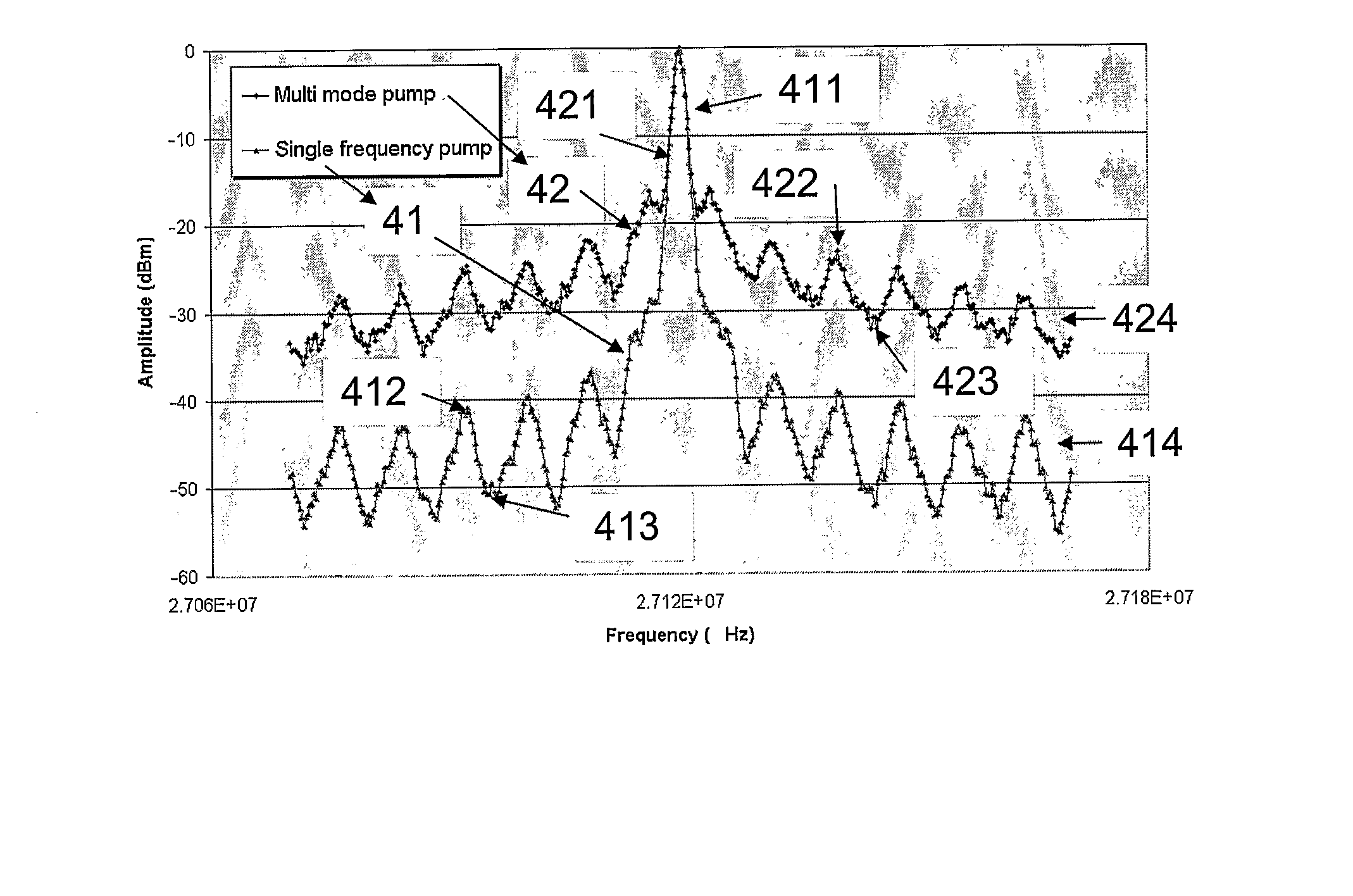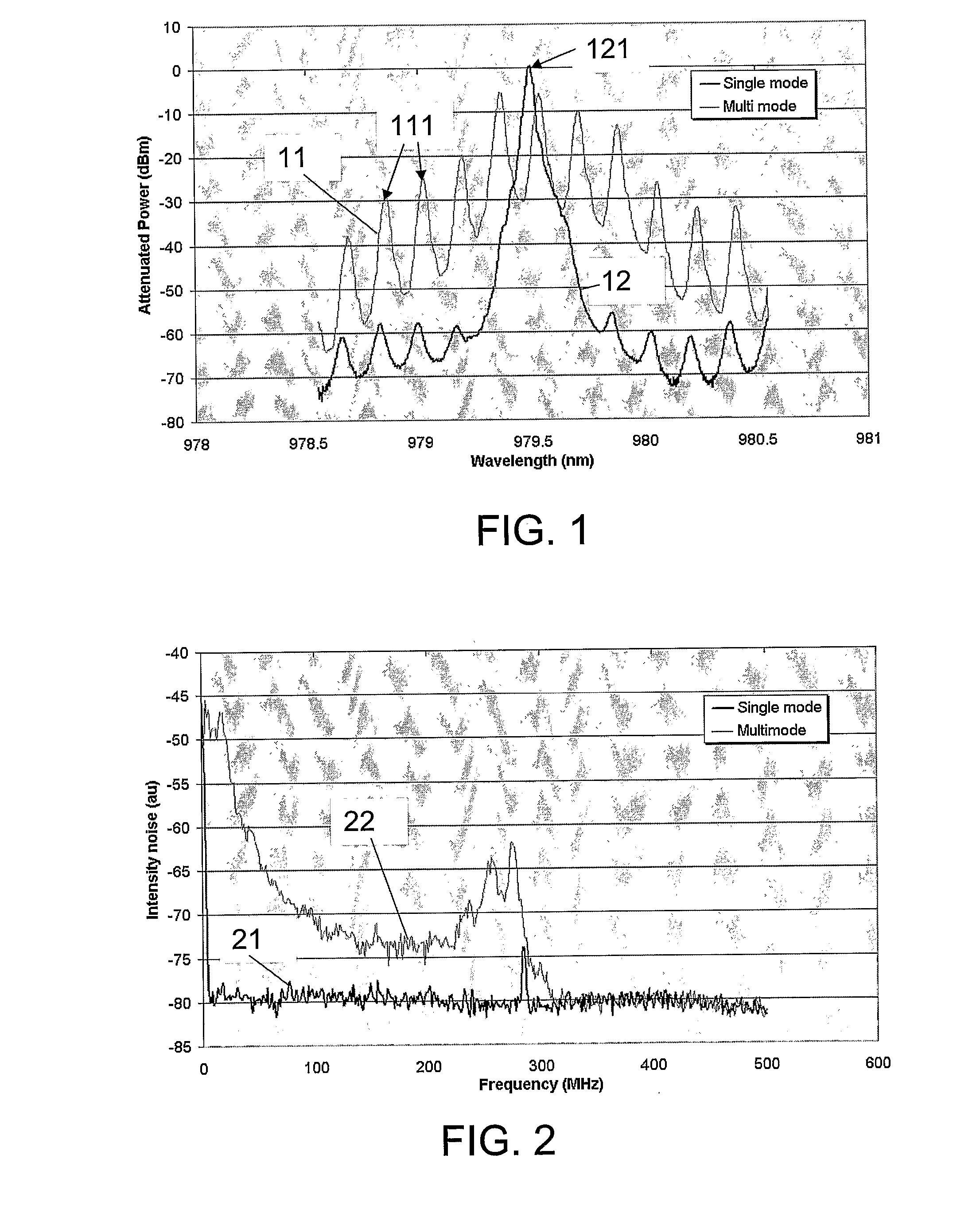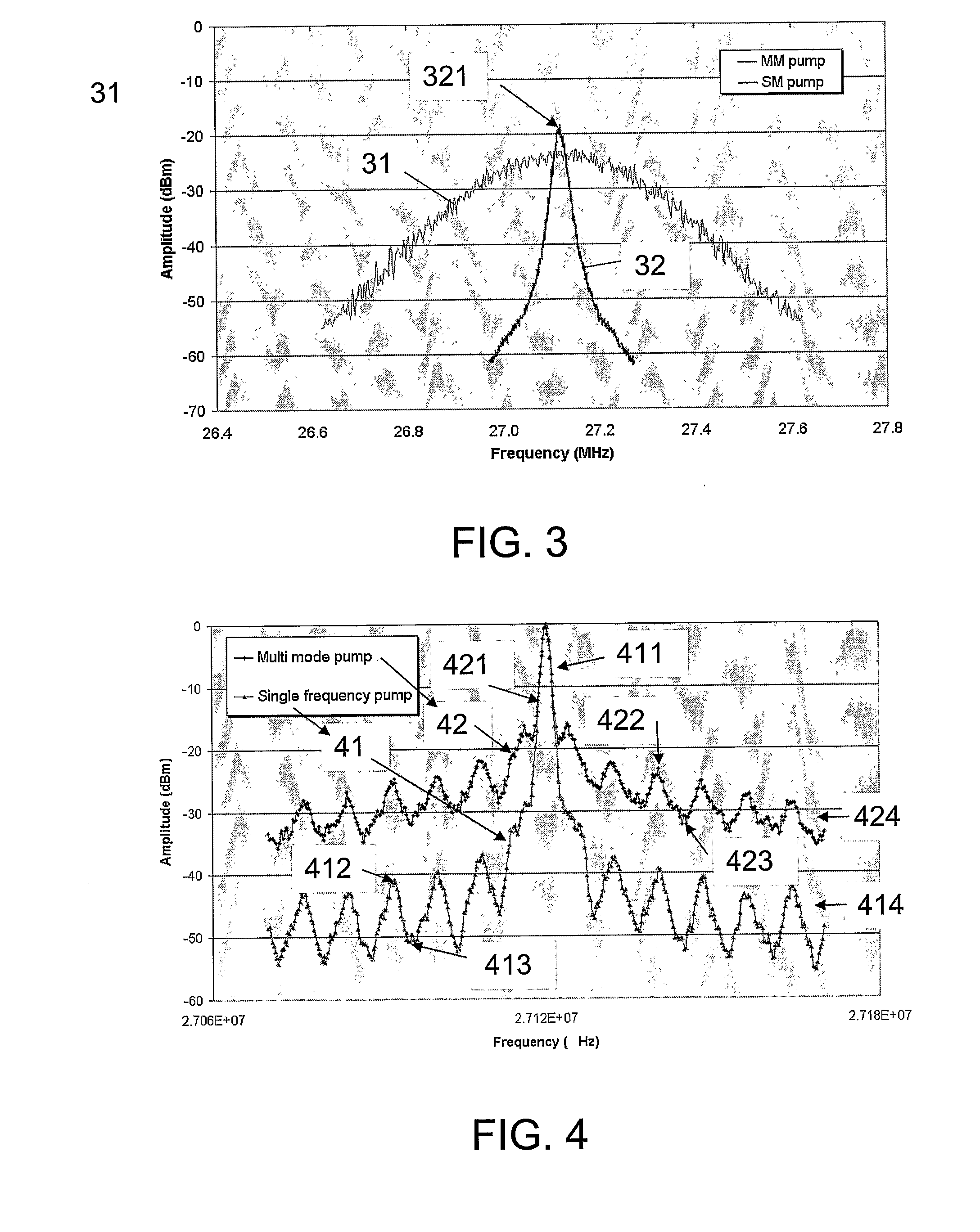System Comprising a Low Phase Noise Waveguide Laser, a Method of Its Manufacturing and Its Use
a waveguide laser and low phase noise technology, applied in the field of lasers, can solve the problems of reducing affecting the efficiency of laser systems, so as to reduce the influence of vibrational pick up of laser systems and low phase noise
- Summary
- Abstract
- Description
- Claims
- Application Information
AI Technical Summary
Benefits of technology
Problems solved by technology
Method used
Image
Examples
example 1
[0118]FIG. 11 shows the 20 dB full width of the beat signal (as described in FIG. 3 and FIG. 4) as a function of the fibre length between the pump laser diode and the fiber laser for a laser system according to the invention at a pump power of 200 mW. It follows from these measurements that the line width increases rapidly at relatively smaller fibre lengths (e.g. <2 m) and increases more gradually at relatively larger fibre lengths (e.g. approximately linearly above 6 m).
[0119] The measured behaviour could be explained by the pick up of acoustic or mechanical vibrations by the optical fiber (see e.g. “Fiber distributed feedback lasers used as acoustic sensors in air”, S. W. Løvseth et al., Applied Optics, Vol. 38, No. 22, 1999, p. 4821). The relationship between the frequency νa and the wavelength λa of these vibrations can be expressed by the simple formula: νa=cs / λa with cs the speed of light in the optical waveguide medium, here a silica fibre (approximately 6000 m / s). This is ...
PUM
 Login to View More
Login to View More Abstract
Description
Claims
Application Information
 Login to View More
Login to View More - R&D
- Intellectual Property
- Life Sciences
- Materials
- Tech Scout
- Unparalleled Data Quality
- Higher Quality Content
- 60% Fewer Hallucinations
Browse by: Latest US Patents, China's latest patents, Technical Efficacy Thesaurus, Application Domain, Technology Topic, Popular Technical Reports.
© 2025 PatSnap. All rights reserved.Legal|Privacy policy|Modern Slavery Act Transparency Statement|Sitemap|About US| Contact US: help@patsnap.com



